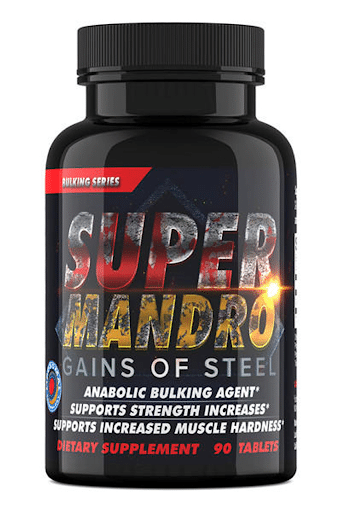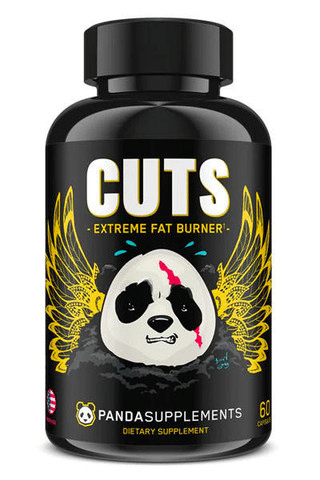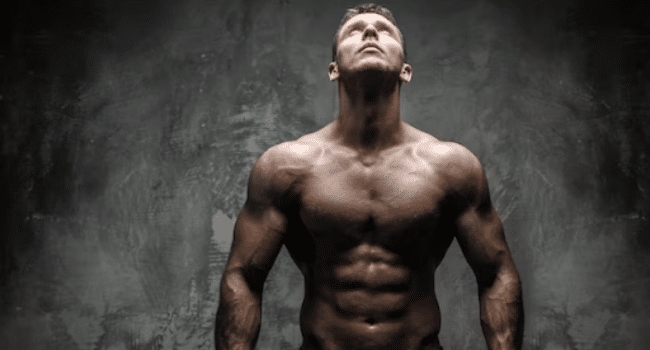Table of Contents
In the dynamic realm of fitness and body sculpting, the pursuit of a lean and well-defined physique stands as a common aspiration for many individuals. As fitness enthusiasts continually seek innovative methods to optimize their training and nutrition regimens, the spotlight often falls on supplements that can accelerate the process of achieving lean gains. One such category that has garnered attention is cutting prohormones, heralded for their potential to support fat loss and the development of lean muscle mass.
In this comprehensive exploration, we delve deep into the world of cutting prohormones, unpacking their mechanisms, benefits, and potential risks. Our goal is to equip readers with the knowledge needed to make informed decisions about incorporating these supplements into their fitness journey.
Understanding Prohormones
Prohormones are precursors to hormones, compounds that are converted into active hormones within the body. Unlike synthetic hormones, prohormones are naturally occurring substances that can be found in certain foods and are also produced by the body. These compounds play a crucial role in hormonal balance and regulation.
- Natural Occurrence: Prohormones are present in various foods, such as meat, eggs, and some plant sources. The body also produces prohormones, including dehydroepiandrosterone (DHEA) and pregnenolone, which serve as the building blocks for hormone production.
- Conversion Process: When prohormones enter the body, enzymes convert them into active hormones. For example, DHEA can be converted into testosterone or estrogen, depending on the body’s needs. This conversion is a natural and intricate process essential for maintaining hormonal equilibrium.
- Role in Bodybuilding: In the fitness realm, prohormones are often used to enhance muscle growth, strength, and overall athletic performance. These compounds can act as precursors to anabolic hormones, supporting an increase in muscle mass and aiding in recovery.
How Prohormones Differ from Anabolic
Prohormones and anabolic share similarities in their ability to promote muscle growth, but they differ in their nature, mechanisms, and effects on the body.
- Natural vs. Synthetic: Prohormones are natural compounds that the body can convert into active hormones, whereas anabolic are synthetic versions of hormones, typically testosterone. This fundamental difference influences how they interact with the body’s systems.
- Mildness of Effects: Prohormones are often considered milder than anabolic, with a less pronounced impact on hormone levels. This can be advantageous for individuals seeking moderate gains with potentially fewer side effects.
- Conversion Process: Prohormones rely on the body’s enzymatic conversion to become active hormones, allowing for a more gradual and controlled release. Anabolic, on the other hand, directly introduces synthetic hormones into the bloodstream, leading to a rapid and intense impact on the body.
For those looking to maintain hormonal balance while working toward a leaner physique, medically supervised hormone replacement therapy in Aurora can support energy levels, muscle recovery, and overall performance throughout cutting phases.
Mechanism of Action
Prohormones exert their effects through a multi-step process within the body, contributing to the promotion of lean muscle gains in individuals engaging in resistance training and other fitness activities.
- Enzymatic Conversion: Upon ingestion, prohormones undergo enzymatic conversion, primarily occurring in the liver. This process transforms them into active hormones, such as testosterone and other androgens, which play a pivotal role in muscle development.
- Hormonal Signaling: Active hormones produced from prohormones engage with specific receptors on muscle cells, initiating intricate signaling pathways. These pathways regulate protein synthesis, the fundamental process behind muscle growth, by increasing the rate at which cells build proteins.
- Enhanced Nitrogen Retention: Prohormones contribute to improved nitrogen retention within muscle tissues. Nitrogen is a key component of amino acids, the building blocks of proteins. Elevated nitrogen levels support an anabolic environment, fostering muscle protein synthesis and growth.
- Increased Red Blood Cell Production: Some prohormones may stimulate the production of red blood cells, enhancing oxygen delivery to muscles. Improved oxygenation contributes to endurance during workouts and aids in recovery, crucial elements for achieving and maintaining lean muscle mass.
Interaction with Hormones and the Endocrine System
Prohormones intricately interact with the endocrine system, a network of glands and organs that produce and regulate hormones. Understanding this interaction provides insights into how cutting prohormones influence physiological processes.
- Pituitary and Hypothalamus Communication: Prohormones can affect the communication between the pituitary gland and the hypothalamus, influencing the release of growth hormone and other key regulators of metabolism and muscle growth.
- Androgen Receptors Activation: Many prohormones target androgen receptors, activating them to stimulate anabolic processes. Androgen receptors are present in various tissues, including muscle, and their activation is critical for muscle protein synthesis.
- Feedback Mechanisms: The endocrine system operates on delicate feedback mechanisms. Prohormones, by influencing hormone levels, can modulate these feedback loops, optimizing the balance of anabolic and catabolic processes in the body.
Potential Benefits and Risks Associated with Prohormone Use
While prohormones can offer several benefits related to muscle growth and athletic performance, it is crucial to acknowledge the potential risks associated with their use.
Potential Benefits:
- Muscle Growth: Prohormones, when used responsibly, can support increased muscle mass through enhanced protein synthesis.
- Strength Gains: Users may experience improvements in strength and power output during resistance training.
- Reduced Recovery Time: Some individuals report faster recovery times between workouts, allowing for more frequent and intense training sessions.
Potential Risks:
- Hormonal Imbalance: Improper use of prohormones can lead to hormonal imbalances, disrupting the body’s natural equilibrium.
- Liver Strain: Enzymatic conversion of prohormones in the liver may cause strain, emphasizing the importance of liver health monitoring.
- Cardiovascular Effects: Elevated levels of certain hormones may impact cardiovascular health, emphasizing the need for cardiovascular monitoring.

Different Types of Cutting Prohormones
Overview of Popular Prohormones Used for Cutting
Cutting prohormones are a subset of supplements designed to help individuals shed excess body fat while preserving lean muscle mass. These supplements work by enhancing the body’s metabolic processes, increasing fat oxidation, and optimizing hormone levels. When considering adding in fat loss supplements, understanding the different types of cutting prohormones available is crucial for making informed choices on which fat burner to add to your cycle.
Some popular cutting prohormones include:
- 1-Androsterone (1-DHEA): This prohormone is renowned for its powerful fat-burning properties. It helps increase metabolic rate and thermogenesis, allowing individuals to burn more calories throughout the day. Additionally, 1-DHEA aids in preserving lean muscle tissue, making it an ideal choice for cutting cycles.
- 4-Androsterone (4-DHEA): Also known as 4-AD, this prohormone is converted into testosterone within the body, supporting muscle growth and fat loss simultaneously. It helps increase energy levels, improve recovery, and promote a leaner physique during cutting phases.
Specific Prohormones and Their Effects on Fat Loss and Muscle Preservation
1-Androsterone (1-DHEA):
- Boosts fat metabolism, aiding in the breakdown of stored fat for energy.
- Supports lean muscle retention, preventing muscle loss during calorie restriction.
- Improves overall body composition by promoting fat loss while preserving muscle mass.
4-Androsterone (4-DHEA):
- Elevates testosterone levels, which helps increase muscle strength and endurance.
- Enhances protein synthesis, facilitating muscle recovery and growth.
- Assists in reducing body fat by promoting lipid oxidation and metabolism.
Considerations for Choosing the Right Cutting Prohormone Based on Individual Goals
When selecting a cutting prohormone, it’s essential to consider several factors tailored to individual fitness goals:
- Body Composition Goals: Determine whether the primary objective is to lose body fat, build lean muscle mass, or achieve a combination of both.
- Tolerance and Sensitivity: Assess personal tolerance levels to different prohormones and consider any potential side effects or adverse reactions.
- Stacking Options: Explore the possibility of stacking multiple prohormones to maximize fat loss and muscle preservation synergistically.
- Dosage and Cycling: Understand recommended dosage guidelines and cycling protocols to optimize results while minimizing the risk of side effects and hormonal imbalances.
- Consultation with Experts: Seek guidance from fitness professionals, nutritionists, or healthcare practitioners to ensure safe and effective supplementation.

Combining Prohormones with a Comprehensive Fat Loss Strategy
Importance of a Balanced Diet and Proper Nutrition
A well-rounded and nutrient-dense diet is paramount when incorporating prohormones into a fat loss regimen. Proper nutrition not only supports overall health but also maximizes the benefits of prohormones in achieving lean gains.
- Macronutrient Distribution: Focus on a balanced distribution of macronutrients, including carbohydrates, proteins, and fats. Proteins are crucial for muscle repair and growth, while carbohydrates provide energy for workouts. Healthy fats play a role in hormone production and overall well-being.
- Caloric Deficit: To promote fat loss, create a slight caloric deficit by consuming fewer calories than the body expends. However, it’s essential to strike a balance to ensure an adequate energy supply for workouts and recovery.
- Micronutrients: Ensure sufficient intake of vitamins and minerals, as they play vital roles in metabolic processes and overall health. Consider incorporating a variety of fruits, vegetables, and whole foods to meet these micronutrient needs.
Incorporating Effective Workout Routines for Fat Loss
Prohormones can enhance the effects of workouts when combined with an effective exercise regimen tailored for fat loss. Designing a workout routine that prioritizes both cardiovascular and resistance training is key.
- High-Intensity Interval Training (HIIT): HIIT workouts are effective for burning calories and promoting fat loss. Short bursts of intense exercise followed by brief rest periods can boost metabolism and improve cardiovascular health.
- Resistance Training: Include resistance training exercises to build and preserve lean muscle mass. Prohormones can amplify the effects of resistance training, promoting increased strength and muscle definition.
- Consistency and Progression: Consistency is crucial for any workout routine. Gradually progress in intensity and duration to challenge the body and continuously stimulate fat loss. Track performance to ensure steady improvement.
Conclusion
In conclusion, combining prohormones with a comprehensive fat loss strategy involves a holistic approach encompassing balanced nutrition, effective workouts, and healthy lifestyle choices. By addressing these elements collectively, individuals can optimize their efforts towards achieving a lean physique while responsibly incorporating prohormones into their regimen.
Read more on KulFIy
How to Know Your Workouts Are Worth It: Workout Green Flags
Revitalising Your Midsection: A Holistic Approach to Tummy Tuck Procedures
How You Can Lose Weight In Only 8 Weeks
7 Best Weight Loss Drinks | Day By Day
